Longe line has become a popular event among both amateurs and professionals over recent years as it allows a place to showcase and market yearlings in the show pen as future riding prospects.
It also doesn’t hurt that many longe line classes are futurities, so the chance to earn a paycheck is enticing.
GoHorseShow spoke with a number of top longe line exhibitors, as well as some judges, to learn what goes into the artistry of this class.
If you are currently showing or considering showing in longe line, take notes for some great advice.
Good Longe Line Horses and Good Programs
If you are unfamiliar with the class of longe line you may think that any yearling can become a longe line horse and anybody can master the class with little effort.
However, if you speak to anyone who is successful in the event, you will quickly realize this is not the case.
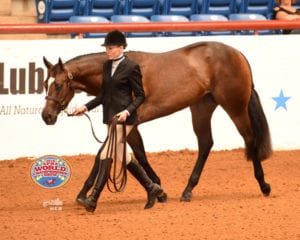 Nicole Dalton of Waddell, Arizona (pictured right) is a multiple APHA World and Reserve World Champion in Amateur Longe Line and said, “The most important quality a longe liner can possess is natural ability. A horse that is naturally strong, a good mover, and has a level top line all indicate that the horse may be a contender for the longe line class.”
Nicole Dalton of Waddell, Arizona (pictured right) is a multiple APHA World and Reserve World Champion in Amateur Longe Line and said, “The most important quality a longe liner can possess is natural ability. A horse that is naturally strong, a good mover, and has a level top line all indicate that the horse may be a contender for the longe line class.”
Amateur Longe Line AQHA Congress Champion, Pete Mead of Washington, Indiana agreed and added, “Horses that hold their head level and are good in the hock, have great conformation, and are pretty; these are all desirable qualities in a potential longe liner.”
So what is the best place to seek out a longe line prospect?
AQHA Professional Horsewoman Kathie Kennedy (pictured below left) of Kennedy Quarter Horses in Ocala, Florida believes that one of the best places to figure out if a yearling will be a longe line contender is in their own environment.
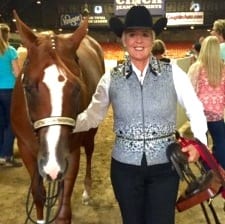 She said, “The best place to look at prospects is in their own environment, where they are most comfortable so I can see what nature ability they have. Prospects these days must have a lot to offer in this competitive market. They must have the self carriage with a good cadence to their stride. They must be balanced and be pretty to score well in the conformation category.”
She said, “The best place to look at prospects is in their own environment, where they are most comfortable so I can see what nature ability they have. Prospects these days must have a lot to offer in this competitive market. They must have the self carriage with a good cadence to their stride. They must be balanced and be pretty to score well in the conformation category.”
And while the above may seem like no-brainers, what ultimately makes a good longe line horse is, well, their brain.
“You have to work with them a little bit before you decide if they are going to make it as a longe liner,” said Mead. “For example, this year I had six prospects and I narrowed it down to three that really have the mind for it.”
“If you run across one that is difficult, they probably aren’t going to be a great longe liner,” Dalton added. “You really want something that is easy and the most natural. If you are having to work to get their head down or go slower, you should probably leave them in the pasture for the year.”
That’s not to say it will be smooth sailing, but the rough waters need to be minimal.
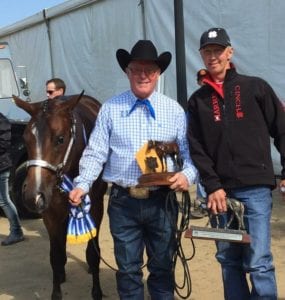 “If you can get through to them and get them to respond, they can still make a good longe liner,” said Mead (pictured right with trainer Kenny Lakins). “But if you can’t get that control fairly quickly, chances are, it’s not going to turn out well.”
“If you can get through to them and get them to respond, they can still make a good longe liner,” said Mead (pictured right with trainer Kenny Lakins). “But if you can’t get that control fairly quickly, chances are, it’s not going to turn out well.”
However, like any successful program, choosing the right horse is half the battle.
The other half is creating a good training program.
Kennedy said, “These babies rely on you for their security. This means that in order to be successful at the show, you have to have your homework done in a consistent fashion before you get there.”
“I start mine in the round pen without a line first,” said Dalton. “I want them to learn the basic commands before teaching them where their legs are supposed to go.”
Mead also starts his yearlings in a round pen but chooses to use a line the majority of the time.
“For me, I first want them to learn how to respect the circle,” he said. “I always start at the walk first. Once they walk a couple circles then I move to the jog. They don’t have to be slow, my main concern is that they are traveling in a good circle.”
 Like any training program, there may be setbacks and everyone we spoke with said that having the ability to read the horse and know what they need is crucial to their success.
Like any training program, there may be setbacks and everyone we spoke with said that having the ability to read the horse and know what they need is crucial to their success.
“I like to get mine out of the round pen within a couple weeks,” said Mead. “But sometimes you have to go back. You have to find out what makes them comfortable enough to want to work for you.”
In addition, all of the exhibitors we interviewed rely on a combination of verbal and body cues to teach their yearlings the longe line; and all of them were similar.
“I use body commands to control the speed of travel and verbal commands to teach them transitions,” said Dalton. “I cluck to have them trot and kiss to have them canter. I also always teach them to turn toward me when they reverse, beginning in the round pen.”
Mead also uses the same cues and likes to teach his horses to pivot on the reverse as well.
“It’s amazing what you can teach them when they listen,” he said.
Style and Grace
If you watch a lot of longe line classes, you will start noticing that each exhibitor has their own style.
Not surprisingly, judges notice this too.
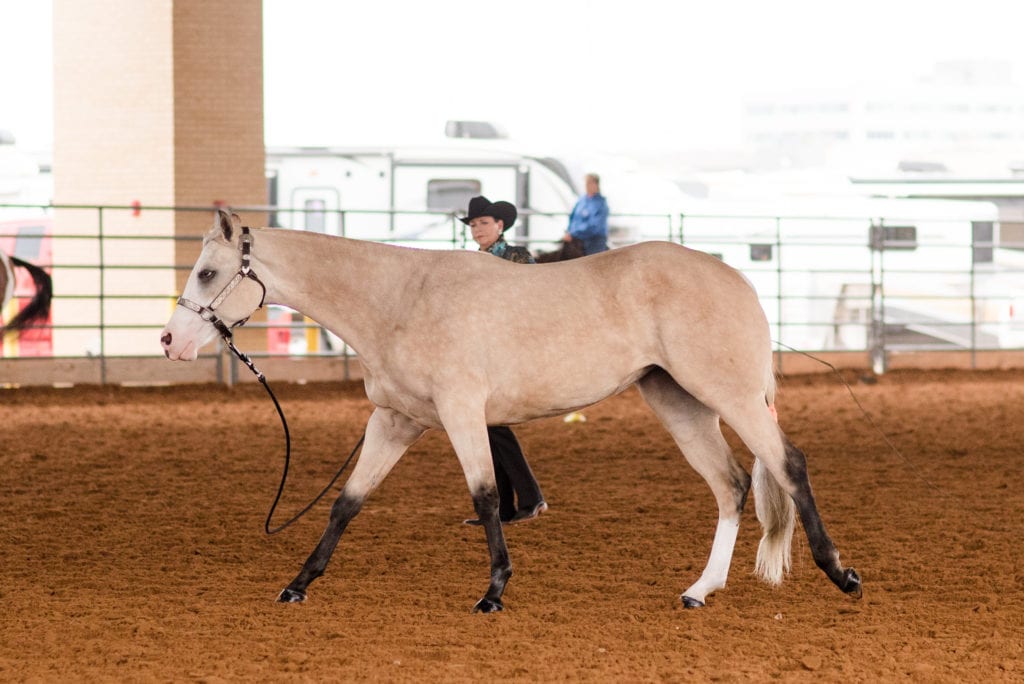 AQHA judge, Larry Hansch said, “An exhibitor with a nice style is one that you barely notice. A good rule of thumb is to be quiet. People who try to be too much of a showman become distracting. They can have a good thing going, but over-do it. For me, when the whistle blows I like to be left wondering how the exhibitor got their horse to trot and lope.”
AQHA judge, Larry Hansch said, “An exhibitor with a nice style is one that you barely notice. A good rule of thumb is to be quiet. People who try to be too much of a showman become distracting. They can have a good thing going, but over-do it. For me, when the whistle blows I like to be left wondering how the exhibitor got their horse to trot and lope.”
“Any time I have to take my mind off the horse is not a good moment,” said AQHA judge and former longe line powerhouse Russ Smith. “A handler that stays out of the horse’s way and has quiet cues shows me that the exhibitor has a connection with the yearling and that the horse is trainable. It shows a horse that is willing to learn, which is a horse I’d want to buy.”
Dalton said, “As an exhibitor, I think your style simply comes from your mannerisms and how you handle horses. Also, I want to dress in a way that is professional and in a way that the judges are less likely to notice me. I want their focus on my horse. I always want them to think I am the most professional in the class.”
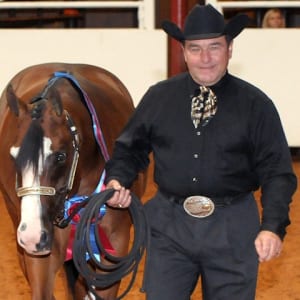 Speaking of attire, you might be surprised at what judges prefer for longe line attire.
Speaking of attire, you might be surprised at what judges prefer for longe line attire.
Hint: It’s nothing fancy.
“If you have a very loud outfit, that tells me that you want the focus to be on you and not your horse,” said Hansch. “As a judge, we try not to look at outfits, but if you are wearing something really loud, we notice.”
“Starched jeans or slacks, a well fitting shirt, a scarf, and most importantly a well-shaped hat is all you need to wear in the longe line,” said Smith (pictured left). “Jackets are acceptable (on both men and women) but really aren’t necessary.”
“Everything just needs to fit properly,” added Hansch. “Including the halter on the horse.”
For Mead, another important aspect to style is what kind of longe line you utilize.
“I like light longe lines that are about three eighth of an inch, I feel like I have more feel than I would with a heavy one,” he said. “I always cross my whip in front of me, underneath the longe line on the reverse. In general, I always keep my whip low until I want my horse to lope.”
Considering the longe line is based on movement, exhibitors also develop a style when it comes to how their horses move on the line.
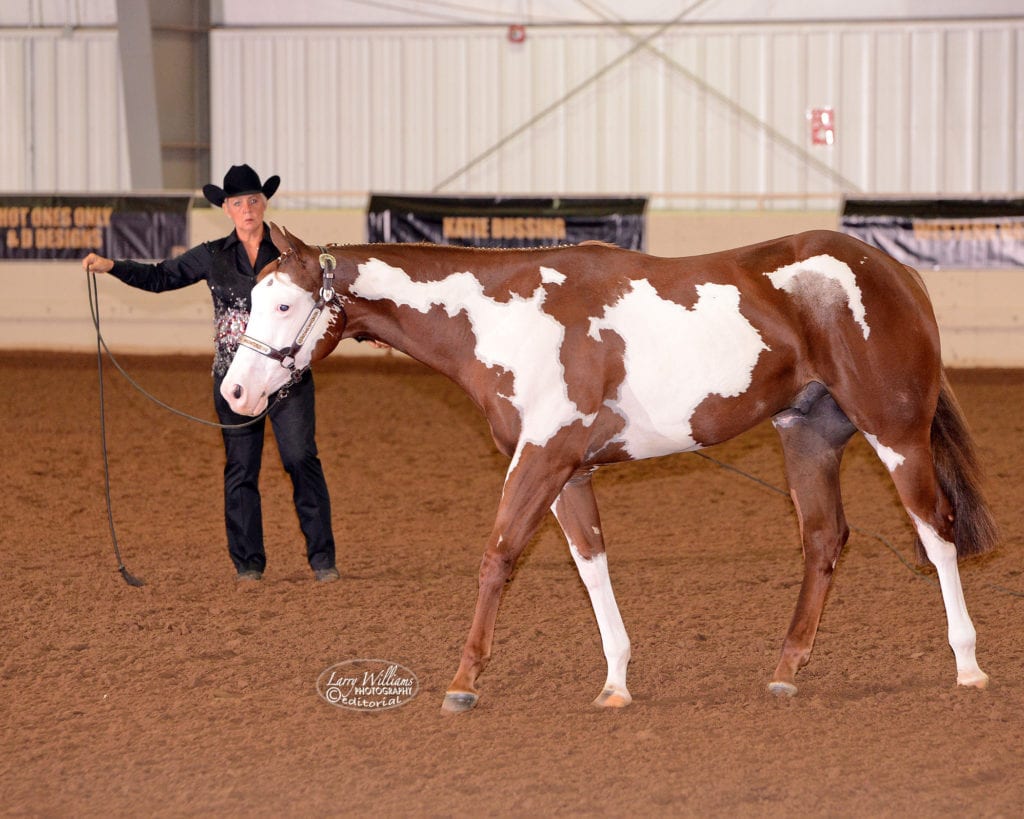 Kennedy shared that she is a big fan of forward movement and for good reason.
Kennedy shared that she is a big fan of forward movement and for good reason.
She said, “We are trying to present to the judges what we feel are good movers and how they will look under saddle. I try not to present the prospect to be animated or ‘overdone.’ These prospects do not have to lope on the spot or jog standing still. I like a lot of forward movement. I like a nice slow, flat footed walk. The jog to be a nice soft two-beat gate with forward motion. The lope should be a nice fluid three-beat gate with lots of swing from the shoulder, nice hesitation through the hock and a correct top line and good expression with their ears and eyes.”
The Controversy: Does Longe Line Actually Ruin Prospects?
While developing this article, everyone we spoke with had something to say about the idea that the longe line class actually ruins prospects and felt it an important topic to cover.
Probably the most important thing to note is that judges can tell if a yearling has been overworked.
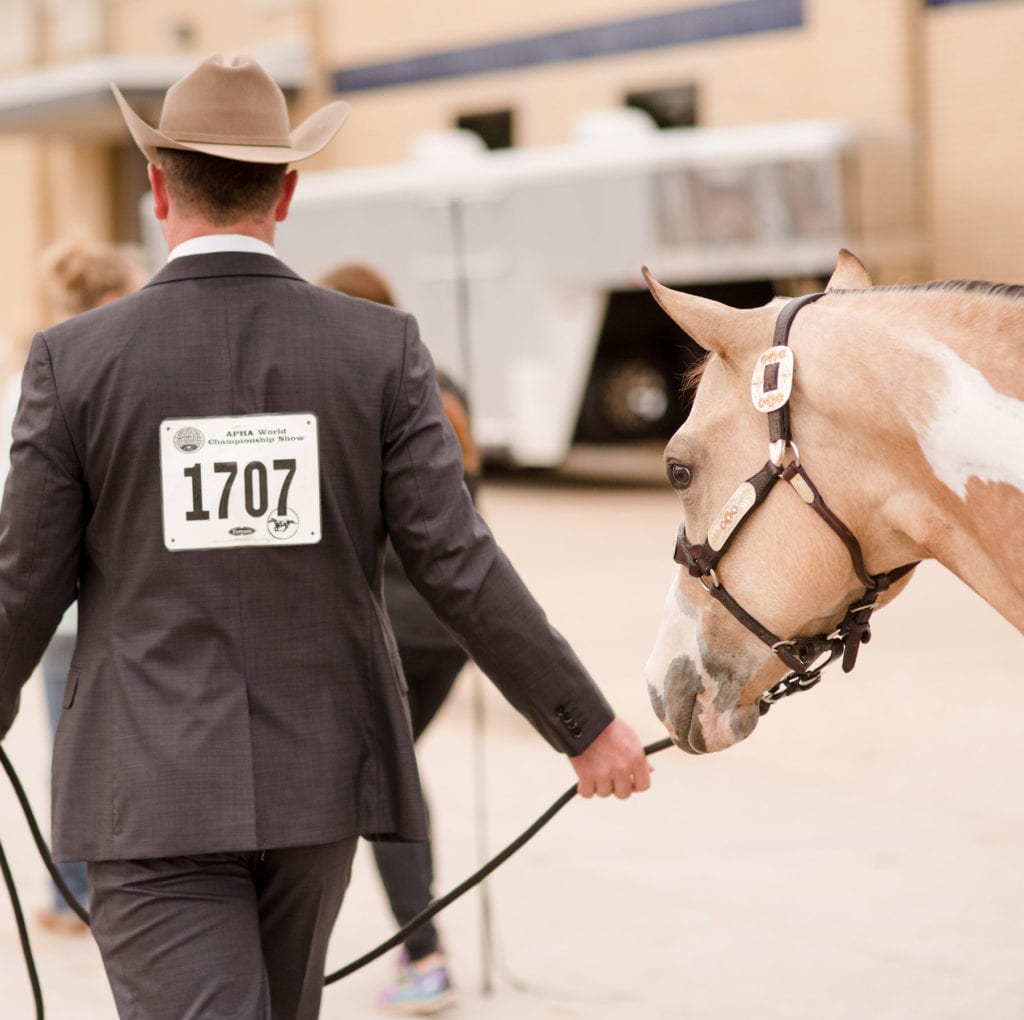 “This isn’t an end all class, it is a starter class,” Smith pointed out. “Horses that don’t want to go forward, pin their ears, and have dropped shoulders are all red flags that the horse has been worked too hard.”
“This isn’t an end all class, it is a starter class,” Smith pointed out. “Horses that don’t want to go forward, pin their ears, and have dropped shoulders are all red flags that the horse has been worked too hard.”
“Mechanical is not ideal in longe line,” added Hansch. “Really, you won’t get very far as the horse will eventually start doing it on their own. Judges like to see horses that respond off cues, it tells us that the horse is trainable.”
Exhibitors agreed with the judges that the main reason longe line gets a “bad rap” is because of overwork.
Of course, it is speculation but the main sentiment is that too many people get wrapped up in the idea of the horse being really broke and should not “play” on the longe line, but the rule book clearly states that horses are not to be penalized for play.
Kennedy said, “This class has geared away from being a command class. In today’s world the class is judged on the natural movement of the yearling. So it’s okay to have a small boo boo, as long as it is not for a long period of time.”
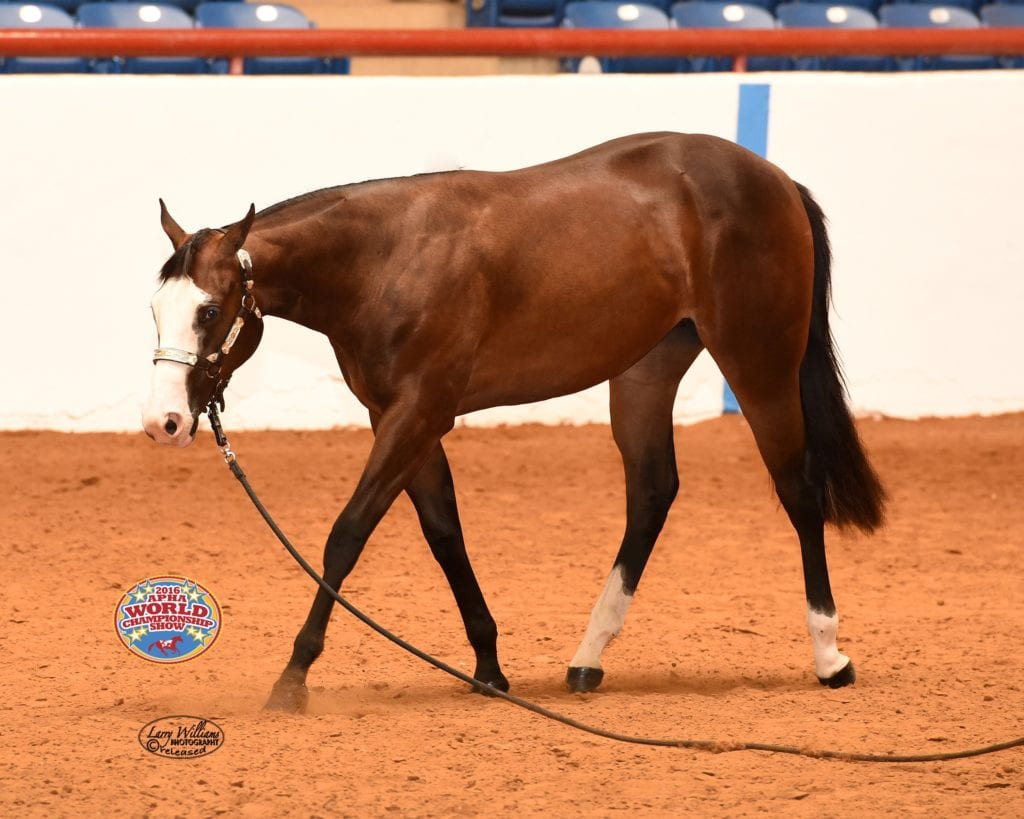 “Horses that play should not be penalized unless it detracts from the time and/or distance that prevents the judge from adequately scoring their performance,” said Hansch.
“Horses that play should not be penalized unless it detracts from the time and/or distance that prevents the judge from adequately scoring their performance,” said Hansch.
“A horse that plays that isn’t mad doesn’t bother me,” said Smith. “But, you can tell when a horse is bored and is just simply misbehaving. We have a manners box for a reason and generally, horses that are mad (due to overwork) will score a zero in that box.”
To answer the question if longe line ruins a prospect?
Well, that all depends.
“A poor program will definitely ruin a yearling,” said Dalton. “Proper longe line will not. I’ve had several longe liners go on to have amazing riding careers. Yearlings that have been longe lined can actually be the easiest to start, if they haven’t been forced to do something they hate.”
Kennedy agreed and said, “If it’s done properly, these yearlings make a great name for themselves and prove to be great show horses in the years to come. I have been very fortunate over the years. Many of the yearlings that have passed through my barn have gone on to become some of the top western pleasure and hunter under saddle horses in the nation. ”
 Mead also agreed and added that to ensure they aren’t overworked part of his program is to actually leave his longe liners alone as much as possible.
Mead also agreed and added that to ensure they aren’t overworked part of his program is to actually leave his longe liners alone as much as possible.
“You can absolutely burn them out,” said Mead. “I like to allow mine to be horses to the fullest extent. They get turned out for as long as possible in between shows and you can’t get them exhausted before a class. Between the Tom Powers and the NSBA World, all of mine stay in the pasture and go untouched.”
So with all this talk of overwork, the question remains how much is too much?
All of our exhibitors agreed that at the very most, yearlings should only be shown at a total of six shows, which means their maximum amount of times being shown is twelve if they are exhibited in both the amateur and open.
However, a lot of times, they are shown even less.
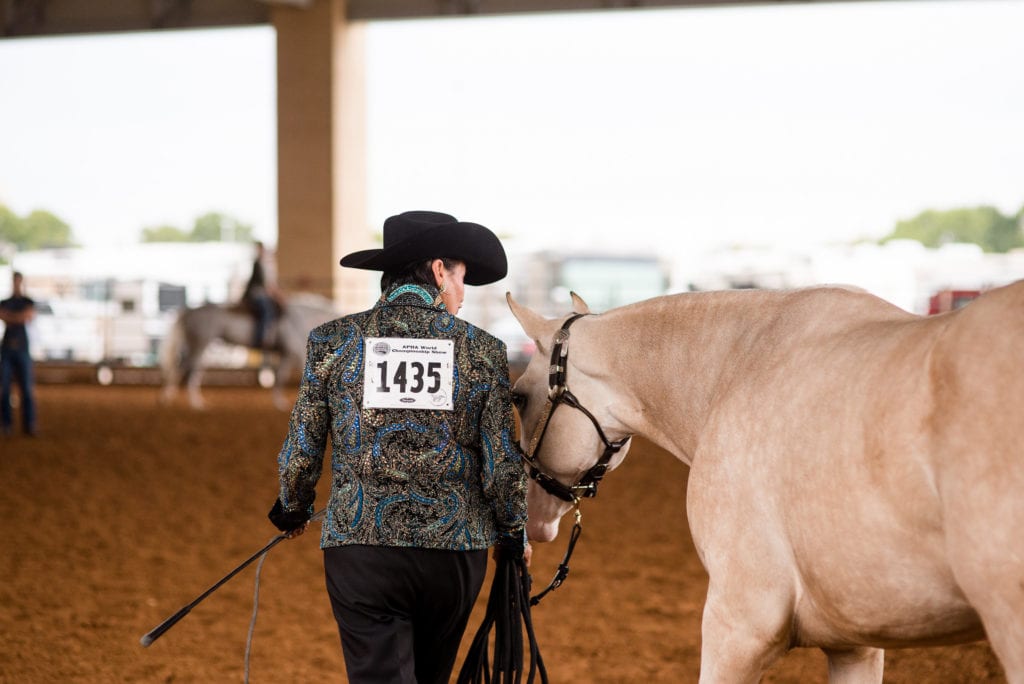 “I only show go to four shows a year,” said Kennedy. I start at the Tom Powers and then on to the NSBA, Congress, and finally the APHA World. We all need to remember that these are babies, their bones and body are still developing. The yearlings have a long show life ahead of them and I like to shape that for them.”
“I only show go to four shows a year,” said Kennedy. I start at the Tom Powers and then on to the NSBA, Congress, and finally the APHA World. We all need to remember that these are babies, their bones and body are still developing. The yearlings have a long show life ahead of them and I like to shape that for them.”
Mead likes to give his yearlings the “horse show environment” without even actually going to shows.
He said, “I will haul mine to two or three different arenas in a day and longe them for a few minutes then tie them back up until it is time to go to the next one to get them more mentally broke. That way, it is like they just went to a bunch of different shows but it is kept really low key.”
For Dalton, taking the yearlings to local shows and getting them exposed in other areas helps her keep her yearlings show ready without overdoing it.
 “I like to take my yearlings to the shows and show them either in the halter or in-hand trail to help them with the horse show mentality,” she said.
“I like to take my yearlings to the shows and show them either in the halter or in-hand trail to help them with the horse show mentality,” she said.
As previously mentioned, judges notice pretty much everything (that’s what we pay them for) and Smith believes there is one important mantra to remember.
“Exhibitors and trainers need to know when to quit,” he said. “They need to keep in mind that we want to see these yearlings fresh.”
Hansch urged, “Remember that the judges are looking for a prospect. It doesn’t have to be the brokest horse, but he needs to love his job and show that he can be trained. Of course, movement is important but so are these other things. I disagree with the thought pattern that longe line makes bad two-year-olds. It could be that the person either pushed too hard, or it could just be that the horse doesn’t make a great rider.”
“Every horse should have an opportunity to shine,” said Dalton. “We have to keep in mind that some just don’t make great longe liners. If it isn’t completely natural, don’t push it.”
About Chenay…
A Tucson, Arizona native Chenay started riding Pony Hunters at 6 years old until she found a passion for Paint horses in 1993. She began showing at APHA approved shows in November of that year and continued on with a successful Youth career until 2000. She went on to graduate from the University of Arizona in 2006 with a dual Bachelor of Arts in English and Creative Writing. Today, she lives in Yucaipa, California with her husband, son, and lots of animals, including a rescued APHA mare.









